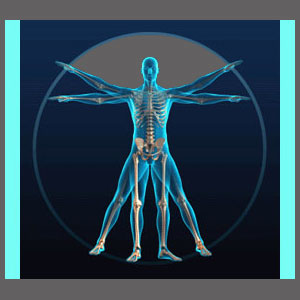
Spinal stenosis exercises are common conservative treatment options prescribed for virtually all patients, typically as part of a physical therapy program. Many of you write to me inquiring about the best forms of exercise for treating spinal stenosis. This is a loaded question, since the answer must relate to the goal of the patient asking. To put it simply, no exercise will do anything at all to relieve the physical structural changes associated with spinal canal stenosis. However, exercise may help to manage the condition and maintain functionality and may also be useful for helping to properly diagnose pains which have been mistakenly blamed on central canal stenosis, but are actually due to some other source.
The essays contained in this resource section will assist patients in better understanding all manner of exercise therapies used to treat spinal and foraminal stenosis.
Ideal Spinal Stenosis Exercises
Here are some of the more popular and commonly recommended forms of exercise therapy used to treat spinal stenosis conditions:
Swimming for spinal stenosis is one of my personal all time favorite activities. I am an avid swimmer, an interest fostered by a family love for the water. Swimming is both a fantastic full body workout, as well as an ideal activity for those in pain. The water is very forgiving and removes the effects of gravity while exercising, for a smooth and usually pain-free experience.
Walking for spinal stenosis is the simplest way to get some exercise while not doing more harm than good. I am also an avid walker and spend much time in the warm weather outside walking in my neighborhood. In the winter, I am stuck on the elliptical, which is not nearly as rewarding spiritually.
Yoga for spinal stenosis is a great form of activity for many back pain issues. Lumbar spinal stenosis often benefits from forward bending, so yoga can definitely provide some real relief. Just make sure not to overdo it, without lots of practice, to avoid injuring yourself in the process.
Tai chi for spinal stenosis might help relieve pain and will almost certainly provide additional general health benefits.
Pilates for spinal stenosis is a former rehabilitation therapy that is now a great method of exercise with proven benefits for the spine. Pilates for foraminal stenosis is another common application of this popular rehabilitation method.
Facts Concerning Exercise Therapy
As previously mentioned, patients who hope that a particular form of exercise will cure them are inevitably greatly disappointed. No exercise will reverse the structural changes in the spinal canal or neuroforamen. Patients who realize the limitations and uses for spinal stenosis exercise therapy will generally benefit from any of those listed above, based on interest and ability. Some patients find virtually miraculous spinal stenosis relief when exercising. This is common with many types of back pain and is typically an indicator of structural misdiagnosis.
Regional ischemia is an oxygen deprivation syndrome which is known to be a leading cause of chronic back pain, as well as many other problematic health issues. Exercise reverses this process by forcing increased circulation, and therefore oxygenation, into the affected area. This is why the relief is so marked, but unfortunately, so temporary. If this is your reality, then there is a very good chance that your diagnosis is completely wrong, unless that diagnosis is regional ischemia, also known as tension myositis syndrome, of course.
Expectations for Spinal Stenosis Exercises
Not exercising is very dangerous at any stage of life. Sure, as we get older or less physically able, we all have to slow it down and be a bit more conscientious of how hard we push our bodies. Just look at me, for example. Decades of full contact martial arts training has left me with the body of a much older man inside, even if it still looks good externally (or so I am told, mostly by my kind wife). I have lots of injuries and some which have caused quite a bit of grief for me during my decades of suffering from chronic back pain. I know now that I am not invincible and have taken up less strenuous forms of physical activity to preserve the health I have left.
Even if you are in pain, exercise is good. Just be sure to match the activity to your condition. This is best accomplished by consulting with your doctor, a physical therapist or a certified fitness trainer.
I detail my own highly effective program of exercise in my book Back Exercises and Stretches. The book is available on our product page as part of the Cure Back Pain Forever Program.
Spinal Stenosis > Spinal Stenosis Exercises





